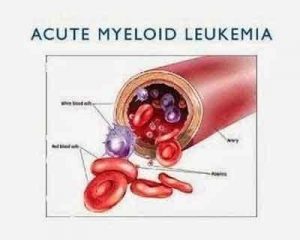- Home
- Editorial
- News
- Practice Guidelines
- Anesthesiology Guidelines
- Cancer Guidelines
- Cardiac Sciences Guidelines
- Critical Care Guidelines
- Dentistry Guidelines
- Dermatology Guidelines
- Diabetes and Endo Guidelines
- Diagnostics Guidelines
- ENT Guidelines
- Featured Practice Guidelines
- Gastroenterology Guidelines
- Geriatrics Guidelines
- Medicine Guidelines
- Nephrology Guidelines
- Neurosciences Guidelines
- Obs and Gynae Guidelines
- Ophthalmology Guidelines
- Orthopaedics Guidelines
- Paediatrics Guidelines
- Psychiatry Guidelines
- Pulmonology Guidelines
- Radiology Guidelines
- Surgery Guidelines
- Urology Guidelines
Cell mechanism discovery could lead to fundamental change in leukemia treatment

Researchers have identified a new cell mechanism that could lead to a fundamental change in the diagnosis and treatment of leukemia.
A team in the University of Kent's pharmacy school conducted a study that discovered that leukemia cells release a protein, known as galctin-9, that prevents a patient's own immune system from killing cancerous blood cells.
Acute Myeloid leukemia (AML) a type of blood cancer that affects over 250,000 people every year worldwide progresses rapidly because its cells are capable of avoiding the patient's immune surveillance. It does this by inactivating the body's immune cells, cytotoxic T lymphocytes and natural killer (NK) cells.
Existing treatment strategies consist of aggressive chemotherapy and stem cell transplantation, which often do not result in effective remission of the disease. This is because of a lack of understanding of the molecular mechanisms that allow malignant cells to escape attack by the body's immune cells.
Now the researchers at the Medway School of Pharmacy, led by Dr Vadim Sumbayev, Dr Bernhard Gibbs and Professor Yuri Ushkaryov, have found that leukemia cells but not healthy blood cells express a receptor called latrophilin 1 (LPHN1). Stimulation of this receptor causes these cancer cells to release galectin-9, which then prevents the patient's immune system from fighting the cancer cells.
The discovery of this cell mechanism paves the way for new 'biomarkers' for AML diagnosis, as well as potential targets for AML immune therapy, say the researchers.
'Targeting this pathway will crucially enhance patients own immune defences, helping them to eliminate leukemia cells', said Dr Sumbayev. He added that the discovery has the potential to also be beneficial in the treatment of other cancers.
For more details click on the link : Isabel Gonçalves Silva, Inna M. Yasinska, Svetlana S. Sakhnevych, Walter Fiedler, Jasmin Wellbrock, Marco Bardelli, Luca Varani, Rohanah Hussain, Giuliano Siligardi, Giacomo Ceccone, Steffen M. Berger, Yuri A. Ushkaryov, Bernhard F. Gibbs, Elizaveta Fasler-Kan, Vadim V. Sumbayev. The Tim-3-galectin-9 Secretory Pathway is Involved in the Immune Escape of Human Acute Myeloid Leukemia Cells. EBioMedicine, 2017; DOI: 10.1016/j.ebiom.2017.07.018

Disclaimer: This site is primarily intended for healthcare professionals. Any content/information on this website does not replace the advice of medical and/or health professionals and should not be construed as medical/diagnostic advice/endorsement or prescription. Use of this site is subject to our terms of use, privacy policy, advertisement policy. © 2020 Minerva Medical Treatment Pvt Ltd